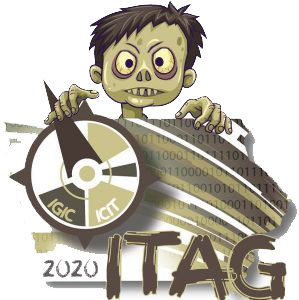Not ITAG 2020: Tales from the Geospatial Bunker
This year due to safety concerns with the COVID-19 pandemic the Iowa Technology and Geospatial (ITAG) Conference 2020 was cancelled. Instead of the typical four-day in person event, ITAG hosted a half-day virtual event. Here is the link to the recording: https://drive.google.com/file/d/1Y31tVqT2Y2dt68kFsefBqSNOTzq0ycIj/view?usp=sharing. Below are descriptions of presentations and links to presenters’ powerpoints:
What’s New with Collector for ArcGIS
Jay Riester and Gale Shea, Seiler Geospatial
Collector for ArcGIS is an ever-evolving field app. Learn what’s new with both the iOS and Android version of Collector.
DEMs – Which One Do I Choose?
Brian Gelder, Iowa State University
The ready availability of Lidar and Phodar datasets has vastly increased the types of Digital Elevation Models that are now available. One can now generate or choose from surface models and elevation models with some having various levels of hydroflattening or hydrocorrection applied. There are also numerous algorithms which can be used to generate the different types of DEMs. So, how does one choose which one is best for the needs of one’s project? We will discuss general DEM types, the underlying assumptions, best choices for certain applications, and sources for prebuilt DEMs for the state of Iowa.
Mapping the Rural Hitch – How One Fire Department Is Utilizing GIS to Prepare for Rural Structure Fires
Adam Gebhart, Johnson County
Traveling around most urban areas, you see fire hydrants or access to a continuous water supply every few hundred feet. However, when traveling around rural portions of the state, these types of continuous water resources are rarely found. This lack of continuous water resource poses a
considerable challenge for local fire departments when responding to fires in rural areas. When a fire occurs, response time is everything. Given the considerable challenges in effectively responding to fire emergencies in rural areas, North Liberty Fire Department (NLFD) is one place utilizing GIS
technology to improve these response times. This presentation will provide background information on mapping the rural hitch to help other fire departments understand how GIS can improve their response to rural fires.
How Data “Moves” in a Versioned Enterprise Geodatabase Workflow
Nathan Teut, Cedar County
The ability to branch child versions off of other versions in a multiuser geodatabase tree structure gives us the ability to edit without stepping on each other’s toes or eating each other’s brains. This also allows QAQC protocols to be put into place when migrating those edits (reconcile and post operations) into the parent versions. To better understand these editing operations, it is necessary to understand the version tree and the concept of state IDs which can be easily viewed through SQL Server Management Studio. In a demo-based presentation, let’s go through an editing example, tracking the advancement of a zombie apocalypse upon Cedar County, by two simultaneous users, and check the state IDs to better
understand how the data “moves” from child to parent. Finally, lets quickly review the arcpy methods for automating reconcile, post, and geodatabase maintenance (rebuild, analyze, and compress operations).
Playing Nice with Your Neighbors NG911
Jeff Miller, Dubuque County
This will be a county focused meetup to discuss boundary and alignment issues between counties. For Next Gen 911 to work as expected the boundaries need to be edge matched and roads need to be connected at county boundaries.
GIS Leadership in an Organization and Best Practices for GIS Success
Matt Hoehn and Dan Haag, Esri
Esri’s Dan Haag (St Louis Region Manager) and Matt Hoehn (Account manager for Local governments in Iowa) will be presenting on lessons learned and best practices for GIS and IT professionals to use Location Technology to become leaders in their organizations. Presentation and discussion topics include; GIS and technology strategy, focusing on capabilities, establishing GIS value with business focused solutions, overcoming technology challenges, and implementing best practices.

